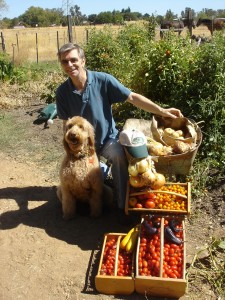As some of you may know I have been analyzing and commenting on the National Gardening Survey on behalf of the National Gardening Association for the last two years and it was a helluva time to start; just when American consumers seem to be walking away from what used to be their favorite outdoor pastime (yes, but that was 1997!). A quick glance at some of the key metrics or results from the 2011 and 2012 survey can be a pretty depressing read.
The Bad News
One number that got really got my attention was the spending per household per year on what the NGS calls “Landscaping”. In 2008 it was the biggest garden spending category, eclipsing “Lawn Care” which is the usual #1. “Landscaping” is the NGS term for the buying of trees and shrubs and all it takes to successfully plant them (DIY, not by a landscaper) so it includes purchases of the tools, mulch, stakes, fertilizer, irrigation and so on as well as the actual woody plants. Only 4 years ago this activity accounted for $11.7 billion or 32.5% of all DIY garden spending; by 2011 that number has dropped to $6.2 billion (a drop of 46% in just four years and 21% in just 12 months from 2010).
Wilting Tree & Shrub Numbers
The NGS is a consumer survey carried out by Harris Interactive with a level of accuracy (margin of error +/- 3 points) equal to political and other well respected surveys we take for granted. Even so some industry observers and operators have questioned the validity of the data so it was interesting to hear three clients in completely different parts of the country tell me of their woody plant experience. They had posted declines in Tree and Shrub sales (not including the associated hard goods sales which were not tracked separately for each woody plant sale in the POS) of 46%, 45% and 41% in the same time period – WOW.
High-Impact Woodies?
In fact they (and other clients) added that in reality, there is little demand for what they call foundation plants and the only purchases of basics such as azalea or spirea are when they are in flower and consumers use them as seasonal decoration – like an annual. Retailers often add that consumers are spending “big” money on high impact woodies such as Hydrangeas or Knock Out Roses purely as a showy decoration for a weekend party or summer color, not caring much if it lasts through the winter.
Oh how things have changed! (Remember how those hobby gardeners would quiz you endlessly about guarantees?! )
The glimmer of hope
This huge drop is not just due to a stalled housing market or flat economy. And it won’t just bounce back when the economy and the housing market recovers. There just is no capital intensive DIY gardening going on right now, in rich or poor neighborhoods. It’s all about maintaining and decorating – just one more sign of a changing market and a changing consumer’s view of their garden. Remember, the glass is half full: if there are consumers willing to spend a few hundred dollars on woody plants they see as disposable, that is one attitude shift we can surely leverage!
Photo credit: Paul Anderson







 h the closing ceremonies with pride for both my homeland and my adopted USA – both have had a spectacular and inspiring showing in the Games this summer.
h the closing ceremonies with pride for both my homeland and my adopted USA – both have had a spectacular and inspiring showing in the Games this summer.
Recent Comments